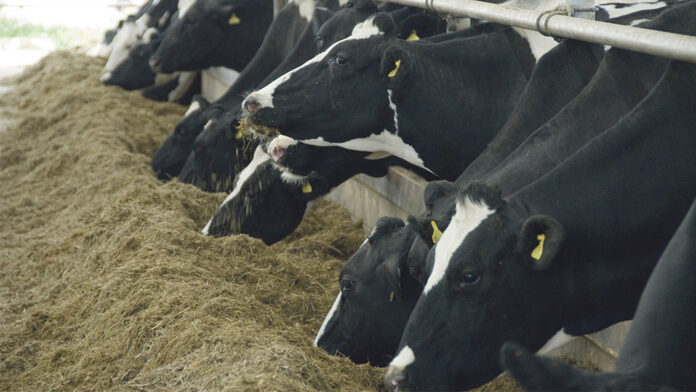Lucerne is an extremely useful forage for dairy cows; however, the plant has a high crown and hence is sensitive to grazing. It can substitute up to 80% of commercial feeds purchased for the dairy cow.
Lucerne is not the only legume that can be incorporated in the pasture profile. There are many more legume species which can serve the same purpose but when compared, lucerne comes out with gleaming attributes. It has very high protein content (15 – 25%), highly digestible (60 – 75%) and has high levels of energy (ME 8 – 11MJ/kg DM). It comprises about 50% of all protein supplements in livestock feeds. It can be pelleted and stored in bags.
According to its stage of growth, the protein content in lucerne ranges from 15-22 per cent. Grasses usually contain way less than 12 per cent crude protein yet dairy animals require between 16-20 per cent.
It is also rich in vitamins and minerals, and if cut at the early flowering stage, it supplies a good blend of energy and fibre.
The correct way to establish lucerne is by first properly inoculating the seeds. Appropriate inoculants are available in agrovets. For a good sticker make a solution of sugar or molasses in molasses to water ratio of 1:4. Thoroughly mix the sticker with lucerne seeds ensuring that all the seeds are covered by a thin layer of the sticker. Then pour the inoculant on the mixture and mix thoroughly. Do not expose the inoculant to sunshine because it can kill the bacterium. Coat the resulting mixture with lime. This activity should be carried out shortly before sowing.
Use certified seeds to sow on rows 45cm apart on a fine, moist and weed free seedbed at a rate of 3 – 4kg per acre. The soils should be deep and well drained. Avoid any soils that are saline, waterlogged or have damaging herbicides. To avoid scorching of the seeds with fertilizer, ensure that the seeds do not have direct contact with fertilizer by mixing it with soil before sowing.
Sow the seeds shallowly at a depth of 5 to 15mm and cover with light soils because they may not emerge if sown deeper than 20mm and covered with deep soil. Lucerne need sufficient moisture to germinate therefore sow the seeds at the beginning of the rainy season or when you are sure that enough rains will follow soon. Irrigate the seedbed if the soils are dry and continue this until all the seeds have germinated and strong enough to withstand low moisture levels. Ensure that there are no weeds affecting the crop.
On average, lucerne can be harvested twice or thrice in a rainy season with each harvest yielding between 1.5 to 3 tonnes. Under irrigation, forage yields can range from 16-20,000 kg/ha of dry matter in the first year, to 10-16,000 kg/ha in the third or fourth year. Rotational grazing is essential for good stand persistence and 5-8 cm of growth should remain after each grazing. Healthy, well-irrigated stands should be able to produce over 2000 kg/ha of dry matter in 4 weeks.








